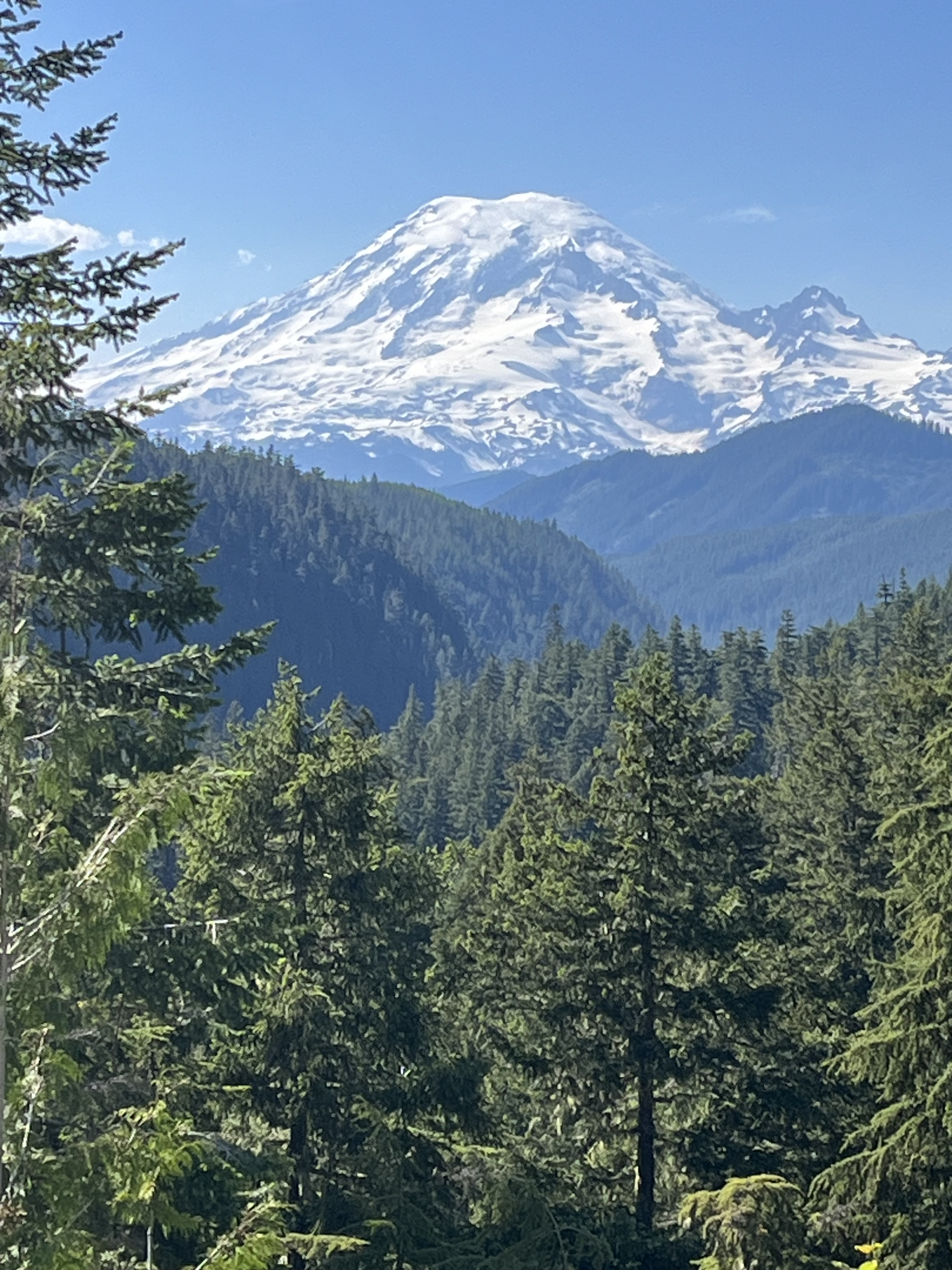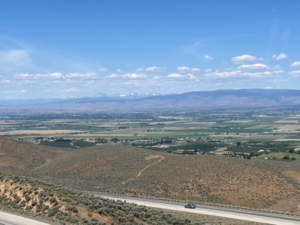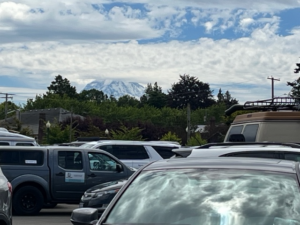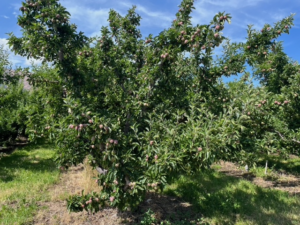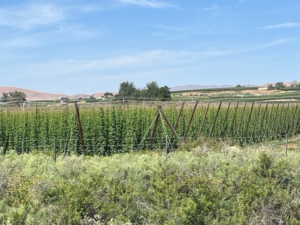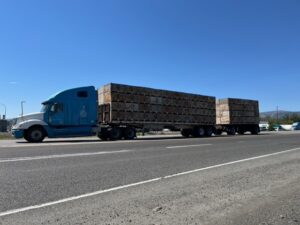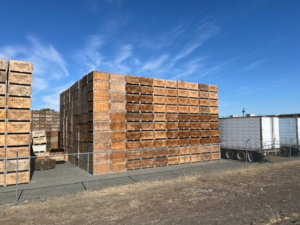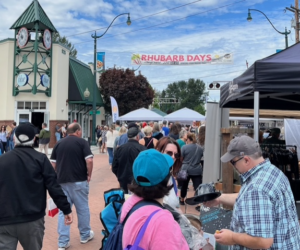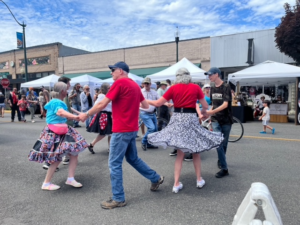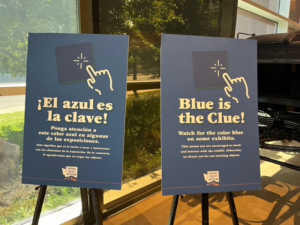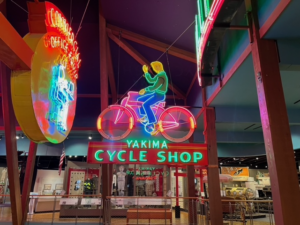More in Common Than You Think
You don’t have to be paying a lot of attention to the wrestling matches on Capitol Hill, social media flame wars, or even the presidential campaign trail to hear a very specific “word list,” again and again: “division”…”polarization”…even, as the 2024 election approaches, “civil war” and “national divorce.”
The American Communities Project, in cooperation with Ipsos and the Robert Wood Johnson Foundation, has conducted nationwide public opinion research, trying to better understand this “divided” America. Some big voices in the culture may be convinced Americans are growling at each other in an era of unprecedented separation. Rank-and-file Americans themselves are, for the most part, not buying it.
Side by Side — and a World Apart
There are few more interesting places to test the proposition than two neighboring counties in Washington State, Pierce and Yakima. They share a border in the Cascade Mountains. The peaks divide the state, east and west, culturally, politically, and in the popular imagination. The American Communities Project classifies Pierce as an Urban Suburb, and it well lives up to the name as the home of more than 900,000 people, 59th in population out of more than 3,100 counties in the US. Yakima is classified as a Hispanic Center in the ACP typology, with Latinos now about half its population of around 250,000.
The much more populous Pierce is a lot smaller than Yakima, less than half its size. It is home to the port city of Tacoma, and Joint Base Lewis McChord, the army and air force facility that is also the largest employer in the county. Yakima County also hosts a military facility, the Yakima Training Center, but it was the empty expanses of scrubland that has made the land ideal for artillery training since the eve of World War II.
The mountains, including mighty Mt. Rainier, have an important geographical and natural role in creating these two worlds. West of the range, lush emerald-green forests march from the foothills to the Pacific shore, creating a stereotyped, well-watered paradise wrapped around the Puget Sound.
To the east, is a tougher, drier, sun-drenched world. Sand-colored hills ring intensely cultivated plains bursting with apples, pears, and hops for brewing. The prodigious harvests grow using irrigated water, abundant even during days of bright, cloudless skies. From the canyons and passes connecting communities east and west of the mountains. That access to piped water creates a gorgeous contrast, like a Thomas Hart Benton mural valleys full of intensely cultivated fields in varying shades of green, rolling right up to the edge of the dry, scrubby hills. Crack the window as you make your way from town to town along county roads, and two very distinctive aromas grab the nose, newly mown hay, and the smoke from distant brush fires.
Put side by side, the counties offer many contrasts: Pierce has almost four times as many households as Yakima, where the average household size is larger. Pierce has a much higher percentage of high school and college graduates as Yakima, and a very high household income of more than $91,000, while Yakima is much closer to the national median at about $65,000 per year. Pierce has more than 550 people per square mile, and Yakima a sparse 59.8. In Pierce, compact and dense, the average daily commute is more than half an hour. In Yakima, workers heading to the fields, warehouses, and processing centers need only 19 minutes to come from home. There are far more people under 18 in Yakima County than Pierce, as a percentage of the population, but the percentage of people under 5 is similar Yakima to Pierce, at 6.9% to 5.9%.
In 2020, when Joe Biden (D) won the national popular vote handily, he lost Yakima County, which steadily votes Republican, 52% to 44%. In Pierce, with a significantly larger voting population, Biden won 53% to 42%, helping him carry Washington State’s 12 electoral votes.
A Double Side
David Morales, who organizes voters in the Yakima Valley as a leader of the South Central Coalition of Voters, told me a sense of common goals and common challenges makes sense to him, even with the very different lives lived east and west of the Cascades. “I think people care about the environment out here despite the different economies. People care about education and about their kids getting ahead. They care about what’s going on in the world, right? So, there are a lot of positive elements, and most people want this country to do better.”
As we talk, Morales concedes that once you get past those broad generalities, the picture does become more complicated. “I think there’s a double side to this. Because we look at the state as a whole and you think, OK, what do I want for my children? People say, ‘I want them to go to work at Amazon and Microsoft and Boeing, all the great Washington State tech and industrial firms that dominate the west side. Most people want to be part of this modernization, that part of the state that’s been growing and vibrant.
“At the same time, there’s a lot of people who either cynically or genuinely look at that and say, ‘It’s the worst ever!’ Among people in Yakima, one of the things people do is rag on Seattle. Say how horrible it is.” Seattle, the state’s urban giant, is just north of Pierce County, and, like Pierce, west of the mountains. “Before they all sit down and have a productive conversation about what Yakima needs to do moving forward, saying to each other that Seattle is horrible is another way of saying there’s differences, right? Between that side of the state and this side of the state.”
The presence, the effect of being near high-wage, high-cost, high-density Seattle is felt in Pierce County as well. Pam Johnson had a first career as an engineer at nearby Boeing, and is now well into a second one as an entrepreneur, running an antiques shop in Sumner, with Mt. Rainier in sight of her shop’s front door. “There’s growth. Huge amounts of growth. Take Sumner for instance. There never used to be apartments, condos. Now they’re building apartments and condos here. They title it as ‘affordable housing,’” she said. Her change in tone made it clear she doesn’t think it is. “I don’t think Pierce County has many plans to keep up with the changes that are happening so fast.”
Jason Maggard’s perspective is deeply rooted in both sides of the mountains. He’s lived about half his life in Yakima County, and half in Pierce County. “My tagline when I left Yakima 30 years ago was, ‘I was the last white picker. I was the last white person in the orchard picking apples,’ and that’s no joke.” He said today Yakima is still “fundamentally the same.” All that has changed, he told me, is who the people in the fields are, and the small, tidy homes in the farm towns hugging the interstate. “The amount of change there is much less than over here.”
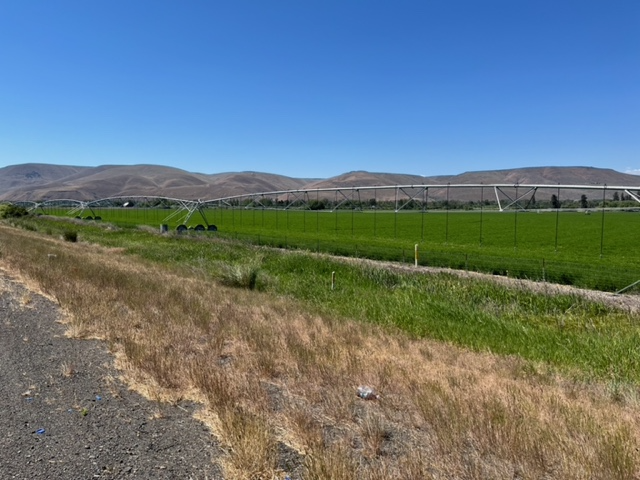
Cosmopolitan Changes
We talked about the changes on a crowded sidewalk during Sumner’s “Rhubarb Days.” For all the talk of rapid population growth, and homebuyers pushed over by high prices in Seattle, Pierce is still rural enough to produce half the rhubarb grown in the US. The annual festival brings people from all over the region looking for a stroll and a fun day out, people who might find the state fair just a few miles away in Puyallup, a bit too much. You can shop for locally grown rhubarb, and a range of products made from the tart, red stalks: syrup, soda, pie, preserves, ice cream, and lemonade.
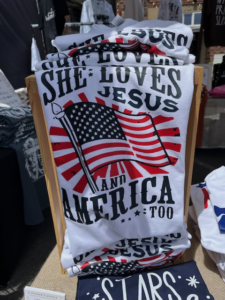
For all the small-town atmosphere at the fair, the crowd shopping the booths was cosmopolitan. Along with patriotic and religious slogans on T-shirts and hats, bikers and cyclists looking for a rhubarb fix, there were strollers with ornate tattoos and hairstyles, same-sex couples, mixed-race families, descendants of immigrants from a little bit of everywhere. When Maggard said the county “is starting to get an LA feel to it,” he was talking more about density than lifestyle. “The suburban sprawl has started to push in really deep, and created traffic even there in the farming areas. Twenty years ago, you could drive ten minutes and you felt like you were in the foothills of Mt. Rainier. Now, not until you’re truly on the foothills of Mt. Rainier do you feel like you’ve left the population base.”
Rising Costs of Living
Maggard said the pandemic pushed the cost of everything up, in particular, housing. Whether you are in the market for an existing home, or want to buy in to the new developments popping up everywhere, living costs are driving up the cost of labor, and the cost of labor is driving up the cost of a new home, or fixing up an old one. Labor, land, and people coming south from Seattle in search of cheaper housing continue to heat up the market. Maggard said one of his workers is now living in an RV. “My number one foreman, this guy has built over a dozen restaurants in Pierce County. Because the price of housing has gotten to be so much, he now lives in a broken-down RV, where he pays a thousand a month to have it parked in a gravel parking lot. He works full time. And that’s all he can afford.”
An economic shift like this has downsides for some, and creates markets for others. Larry Kuhns was a schoolteacher, who dreamed of owning a coffee business. He immersed himself in coffee lore, took business courses at the local community college, and Pierce became the kind of place open to his pitch: We won’t roast your coffee until you order it. “There are more people that maybe initially got their taste for coffee through chains like Starbucks, but now have become a little more sophisticated. They’re brewing their own coffee at home. They’re getting fancier coffee equipment, and they want to have coffee that’s not been sitting on the shelf for months and months. So, the person places the order, then we roast it, so it’s not having any time on the shelf. The clock starts ticking once those beans are roasted. And people want it fresh.” After a significant outlay of capital for his startup, Kuhns had to nurse his baby through the pandemic. “I might have a passion for coffee roasting, but I also had to embrace all the other parts of the business which involves bookkeeping and ordering supplies and a lot of other stuff.”
United Ideal and Exclusion History
Does he think Americans have more in common than is generally believed? The entrepreneur sounded like an idealistic teacher once again. “I think we have always believed that. Everyone has something in common, and right at the heart of it, everyone’s human and you basically want to contribute in some way to society and do something worthwhile. I think we all share a passion for that sort of thing.”
Johnson, aware of the crowding, the traffic, the cost, the change, still waxes idealistic thinking of her neighbors in nearby Pierce and across the mountains in Yakima. Do we have more in common that we realize? “I 150% believe that. Absolutely.” Even at a time we’re told the country is deeply polarized? “I don’t think that we’re divided and contentious. I mean, I think that people have different opinions, but we’ve always had different opinions. You see it on the news, but I don’t witness it every day in my shop, and I’m here sometimes seven days a week from 10 to 5. Yeah, people have opinions, and people want to be heard, but I don’t see a lot of division here.”
Moments before we spoke, and just steps from the door to her shop, Johnson and I watched a political argument over environmental policy on the street. Scattered throughout the rhubarb festival, a group called “Save Our Gas” had set up tables to gather signatures on a petition opposing the new law creating inventives for the state’s largest utility to move away from natural gas appliances in Washington State, HB1589. The fight pitted a middle-aged man in a tie-dyed shirt against a woman in a stars-and-stripes cowboy hat. For Johnson, it dovetailed with our conversation on polarization. “You just saw that, right?, she asked, “Somebody didn’t agree with these people who want their petition signed, and somebody starts calling names and yelling and screaming, right? It’s a very good example. We should be allowed to have our own opinion and have people just respect us for our opinion. I mean, isn’t that how you learn and grow? Hearing different opinions?”
If a pattern emerged from my conversations on both side of the mountains, it was this: Unity was expressed as an ideal everywhere. In Pierce it was inspirational, in Yakima it was aspirational. In Pierce it was a hopeful diagnosis from people who concluded that for all the challenges of today, the United States could solve its problems. In Yakima, some of the belief in common dreams expressed came from the desire to be seen as part of the whole, as belonging, as being welcomed to join the mainstream.
Josue Estrada of Central Washington University, whose research covers race, migration, politics, and citizenship, wanted to remind me that aspiration has a dark side. “There is a tension within the nation, a history of inclusion that some Latinos in our area certainly gravitate to, but there’s also that history of exclusion, which it’s sometimes hard to grapple with, especially in young people. The students that I teach, they’re like ‘Hey, the United States is the greatest nation on earth. It’s allowing my parents upward mobility. But in my classes, there’s also the persistent historical inequalities. We have to understand that particular history of exclusion, those inequalities. They change over time, and most of those are grounded in race and racism.”
On Common Ground
Over the mountains from Sumner, amid green fields bursting with crops, sits Wapato. On the edge of the nearly 1,800 square miles of Yakama reservation land, Wapato is now heavily Mexican-American, and Filipino after years of gradual settlement by newcomers on native land, the nearly 1,800 square miles of the Yakama Reservation. Ashley Zarco’s family came to Yakima County, like so many others here, from Mexico and California, to work in agriculture. Her parents got amnesty from the Immigration Reform and Control Act of 1986, and moved to Yakama land when Ashley was a baby.
Now a student at nearby Heritage University, she recently left the valley for a semester’s internship at Brown University in Providence, Rhode Island. She called her time in the Northeast “a culture shock.” She is still considering her options, and whether her goal, to become a teacher, will take her away from the Yakima Valley.
Do Americans have more in common than they realize? “We do have a lot in common, even though we may come from different backgrounds and different cultures, we ultimately are here for one reason. We all share a common goal which is to have a better life.” Just back from the East Coast, Pierce County may have even seemed a bit more familiar than before. “Places like Tacoma and that, they seem not that far out of reach. They’re a little closer to us, but we all have different upbringings.”
A professor teaching anthropology at Pierce County’s Puget Sound University, Andrew Gardner sends students east of the mountains every year to do field work in the increasingly Latino agricultural communities there. He wasn’t surprised by the widespread willingness to agree that even now, Americans have more in common than they believe. “I guess in my thinking that really points to the fact that these kinds of animosities are conjured up by our media, the media environment we live in, and certainly the social media environment where the loudest and most irate voices sort of have the floor. When in reality, behind those sorts of militant endpoints of our purported spectrum, there are lot, I mean lots of agreeable Americans.”
Gardner said this worldview is informed by his research, and by his own life and upbringing. His parents grew up on either side of the mountains. “What really started to grab my attention were the kinds of attitudes that I was seeing and hearing here on American campuses, amongst my colleagues, amongst my friends and social group: this kind of reactionary antipathy toward rural Americans and this fear, of a very poorly informed and visceral kind, toward those people, with their Trump flags and pickup trucks and racist thinking. This very thin, stereotypical sort of portrayal of who those people are on the other side of the mountains. It didn’t feel like it did justice to my own family’s heritage. And my own interactions with people out there didn’t either.” Gardner said this deepening impression fueled his desire to send his students to the eastern part of the state. “The kernel of my idea with these students is that we can pierce these, kind of, simplifications that are trucked in the media with just human-on-human contact. These students, who have had the opportunity to immerse themselves in these communities have found they are complicated, interesting, ethnically, racially, and politically diverse, just like they are on this side of the mountains.”
Divisions on Religion
One aspect of life the two counties may find less common ground over is religion. Washington State has become one of the most secular, least congregationally-affiliated states in the country, in common with its Pacific Northwest neighbor, Oregon, and a cluster of states in New England. However, a closer look at “religious geography” reveals a much more complicated, and interesting story.
The Cascade Mountains, once again, divide these states. While the green, well-watered counties west of the mountains see more and more adults leaving the religious bodies of family tradition and childhood upbringing behind, the counties east of the mountains are still supporting big churches, active ministries, and a religiously-centered way of life. What puts Washington State on the secular list is the larger size and populations of Pierce, King, and Snohomish.
Across the vast agricultural stretches of Yakima County, it was sometimes hard to find much outside of Christian radio, in English and Spanish, and Mexican pop. There were sermons, bible readings, and phone-in religious talk programs offering advice, religious counseling, and a little prayer to help the caller on his or her way.
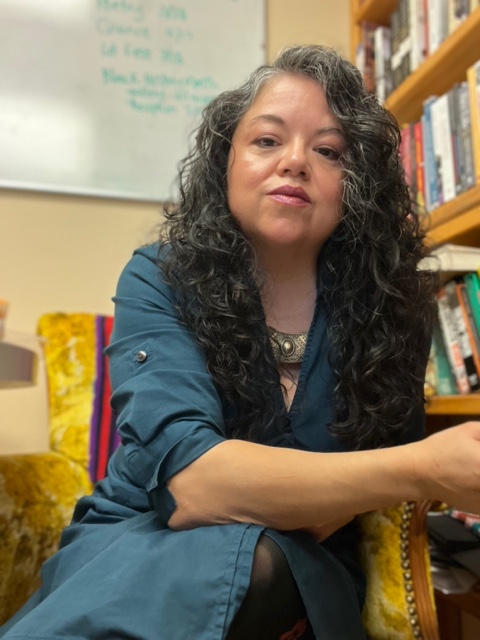
“I’m a Christian. I go to a Christian church here in the Yakima Valley. I have a PhD. I oftentimes feel very white in white spaces. But I’m not because I will always be treated differently.” Sitting in a Yakima café on a hot June day in Yesenia Hunter tells me a story that is partly American Dream boilerplate, and partly aspiration intimately tied to place. “I am the 13th of 17 children of my parents. They came up from Mexico to work in agriculture, and settled here in the Yakima Valley. I am the only child of my parents who has a bachelor’s degree,” a credential she has since followed up with master’s and doctoral degrees. “All of my siblings are very successful. Most of them probably make more money than me, which says something about that coming to the table late and trying to catch up, right?
“They’ve purchased houses. They have their trucks. They have their kids. They’re raising good, Christian, solid kids. And I’m trying to get to a different table, maybe to flip some tables, and I’m really late to that party.” An academic raised in the Yakima Valley, a Mexican-American PhD in a changing community, the professor is a straddler, fully at home in contrasting worlds. In step, and out, at home, at work, and at church. “They just brought a self-proclaimed Christian Nationalist, Sean Fuchs, to town a week or two ago. Last year, they brought Charlie Kirk to Yakima. So, there’s this side of the mountains, definitely Christian, or Evangelical. That flavor of Evangelical Christianity is very strong. And it’s pervasive in the way that our cities are being governed.
The professor mentioned she had curated an exhibit in the local history museum on the teenage rite of passage for Latina 15-year-olds, the quinceañera, and that got me interested in taking a look. The Yakima Valley Museum is a squared-off brick building that shares a parking lot with the municipal pool. Just inside the door was evidence the community was taking note of its changing character. The visitor is greeted by twin signs of welcome, in English and en español, that say, “Blue is the Clue!” “¡El azul es la clave!” reminding guests they can touch exhibits marked with the special blue.
Belonging Underway
A kaleidoscopic tour of the Yakima Valley from pre-history to the 21st century is presented to the English and Spanish-speaking visitor. All the audio exhibits offer narration and explanation in both languages. There is, in accumulation, a story this museum tells. It bravely stepped back from historical bromides to tell a fuller story. The sections of the museum on the long native presence in the Yakima Valley, and the relocation and imprisonment of the significant Japanese population after the US entry into World War II, were sober, straightforward, and unflinching.
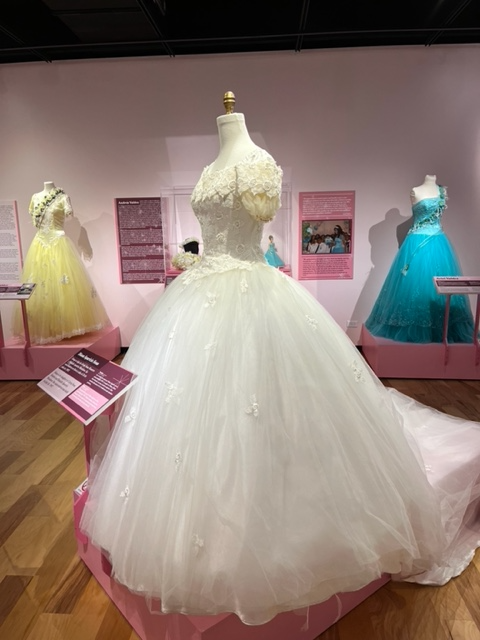
When you turn the corner into Hunter’s exhibition, there is an explosion of color, a burst of taffeta, silk, and satin. The quinceañera is explained, explored, given context for the uninitiated…and hey, how ‘bout those dresses! The tone is celebratory without frivolousness, educative without solemnity, inclusive without patronization. In other words, it fits into what appears to be the museum’s wider project of explaining this place so it will make sense to a retiree or an elementary school kid in a way that’s fearless and fun.
Hunter, a Yakima Valley kid, a historian, a mentor, places a lot of emphasis in her work on rhythm, on tone, on place, and on the demands and requests of everyday life. She asks, What does fitting in look like? What does getting along look like? She said those less-noticed aspects of assimilation are an important part of understanding the kind of “belonging” under way in Yakima County in the 2020s, as Latinos surpass 50% of the population and are now steadily raising their demands for influence and political power. While just over the mountains in Pierce, with four times the population and a third the size, people are coming and going at a dizzying pace, something different is going on in the Valley.
“I say that there’s something kind of hard baked right into the agricultural landscape. It was kind of set long before I set foot on this space. How should you behave? How should you be connected to the land through labor? The fruit of that is being able to purchase a house and get a big truck. So even the idea of being disconnected is OK because you’re still building your wealth.
“The messaging that we get is that you work hard, and then you grow good Christian kids, and they get good jobs. We’re not even really thinking about college, we’re thinking about how our kids are going to make money and then they will get married, rinse and repeat, and they’re going to have their own little thing. If there’s connection, it’s through the church, but then it’s you and your family,” she said.
For people I spoke to on both sides of the mountains, their communities are on their way to somewhere new. Amidst changing circumstances, a shared, inclusive American identity may be a dream. But again and again, it was a dream worth imagining, celebrating, considering. The things that divide these very different American counties are real. And so is the aspiration, even amid all kinds of disagreement, toward a shared home.
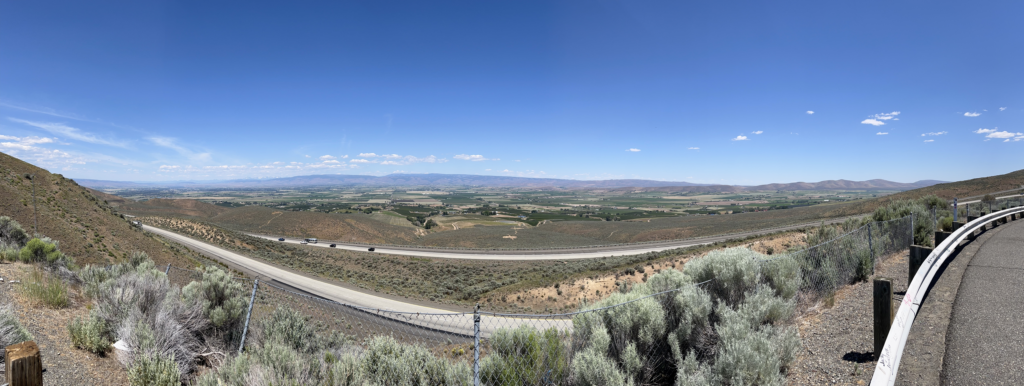
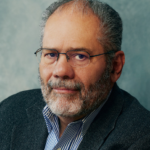
Ray Suarez is the author of the new book We Are Home: Becoming American in the 21st Century.
